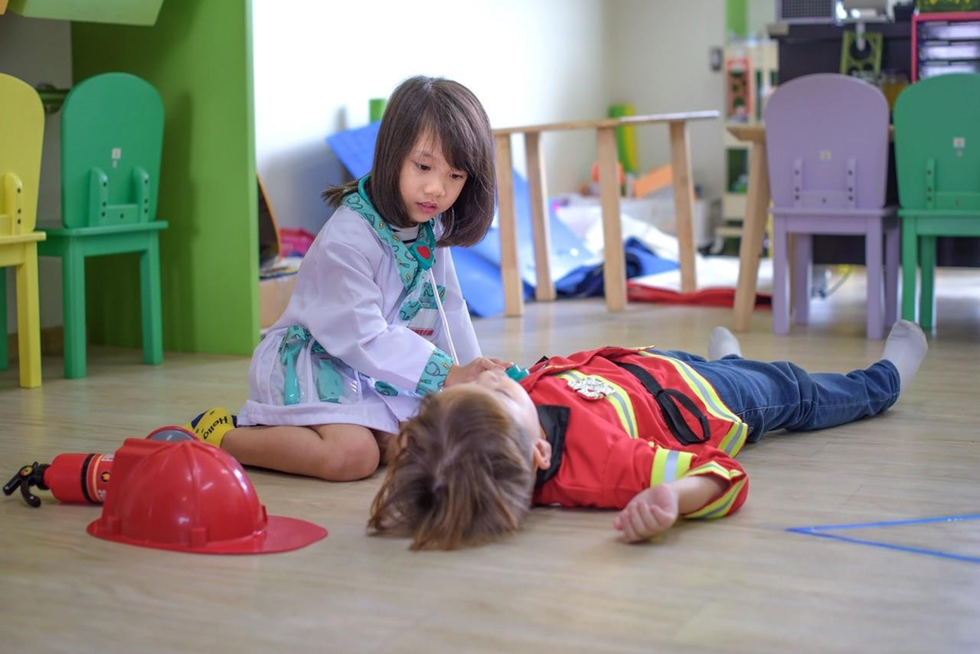The nurse is assessing heart rate for children on the pediatric ward. What is a normal finding based on developmental age?
An infant's rate is 90 bpm.
A toddler's rate is 150 bpm.
A preschooler's rate is 130 bpm.
A school-age child's rate is 50 bpm.
The Correct Answer is A
A. An infant's rate is 90 bpm.
An infant's normal heart rate typically ranges from 70 to 150
B. A toddler's rate is 150 bpm.
The normal heart rate for a toddler usually ranges from 70 to 130. Therefore a rate of 150 bpm would be considered tachycardia in a toddler.
C. A preschooler's rate is 130 bpm.
The normal heart rate for a preschooler typically ranges from 80 to 120 bpm, with an average rate around 100-110 bpm. A rate of 130 bpm would be considered tachycardia in a preschooler.
D. A school-age child's rate is 50 bpm.
The normal heart rate for a school-age child usually ranges from 75 to 118 bpm. A rate of 50 bpm would be considered bradycardia in a school-age child.
Nursing Test Bank
Naxlex Comprehensive Predictor Exams
Related Questions
Correct Answer is D
Explanation
A. Controls impulsive feelings: Preschoolers are still developing their ability to control impulses. While they may begin to understand the concept of rules and consequences, complete control over impulsive feelings is not typically expected at this stage.
B. Expresses need for privacy: Preschoolers may begin to show a growing awareness of privacy but may not consistently express this need or fully understand its implications. This is more commonly seen in older children and adolescents.
C. Builds a collection of cards: Building a collection of cards is not a typical developmental task for preschoolers. While they may engage in collecting objects, the items they collect are often related to their interests and may vary widely.
D. Participates in imaginary play: Imaginary play is a significant aspect of preschoolers' development. They often engage in make-believe scenarios, role-playing, and using objects symbolically to represent other objects. This type of play fosters creativity, social skills, and cognitive development in preschool-aged children.

Correct Answer is C
Explanation
A. Poisoning: While poisoning can be a significant concern among adolescents, it is not the
leading cause of death in this age group. Poisoning deaths may occur due to accidental ingestion of toxic substances or intentional overdose, but it is not as common as other causes of death
among adolescents.
B. Drowning: Drowning is a concern, especially during recreational activities such as swimming, but it is not the leading cause of death among adolescents. Proper water safety practices and supervision can help prevent drowning incidents.
C. Unintentional injuries: Unintentional injuries, including motor vehicle accidents, falls, and other accidents, are the leading cause of death among adolescents. Risk-taking behaviors, lack of experience, and peer influence contribute to the high rate of unintentional injuries in this age group.
D. Diseases: While diseases such as cancer, heart disease, and respiratory disorders can affect adolescents, they are not the leading cause of death in this age group. Unintentional injuries,
including those resulting from accidents and trauma, are more common causes of death among adolescents.
Whether you are a student looking to ace your exams or a practicing nurse seeking to enhance your expertise , our nursing education contents will empower you with the confidence and competence to make a difference in the lives of patients and become a respected leader in the healthcare field.
Visit Naxlex, invest in your future and unlock endless possibilities with our unparalleled nursing education contents today
Report Wrong Answer on the Current Question
Do you disagree with the answer? If yes, what is your expected answer? Explain.
Kindly be descriptive with the issue you are facing.
